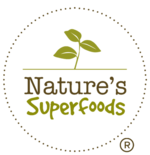-
No products in the cart.
How does Virgin Coconut Oil compare with other healthier cooking oils such as Rice Bran Oil, and Extra Virgin Olive Oil (EVOO)?
Virgin Coconut Oil vs Extra Virgin Olive Oil – VCO is largely made up of saturated fats while EVOO is largely made up of monounsaturated fats. On the scale of stability to heat-induced damage, the saturated fats (VCO) are more stable (more heat-resistant) as compared to mono-unsaturated fats (EVOO). EVOO is more suitable for cold foods (in salad dressing or drizzle over foods) and for light cooking. (Cooking may also destroy some of the heat-sensitive antioxidants and Vitamin E in EVOO). If you are making an effort to control your weight, use EVOO sparingly, as its monounsaturated fatty acids are quite long in structure, which makes them more prone to being stored as fat than short or medium chain fatty acids (as those in VCO). Medium chain fatty acids (MCFAs) are metabolized diferently from long-chain fatty acids- MCFAs are converted into energy quickly in the body, reducing fat deposition and facilitating weight control. Virgin Coconut Oil vs Rice Bran Oil – Rice Bran Oil has a high smoking point like VCO. The only disadvantage of Rice Bran Oil, in our opinion, is its high content of Omega 6 polyunsaturated fatty acids (as compared to Omega 3 fatty acids). Most of us in developed countries, with our Western diets, are already consuming too much Omega 6, as compared to our Omega 3 intake. The ideal ratio of Omega 6 to Omega 3 intake is 1:1. Our modern-day ratio can soar up to 15:1 (Omega 6: Omega 3). This imbalanced ratio of Omega 6 to Omega 3 easily leads to more inflammation-related health problems such as higher rates of diabetes, cancer, heart disease, stroke, arthritis and skin disorders. So unless you are supplementing with reasonable amounts of Omega 3 in your diet, it will be better to stay away from oils heavy in Omega 6 polyunsaturated fats. Most vegetable oils are Omega 6-heavy. So when evaluate cooking oils, remember: Too many omega-6s = Bad.

